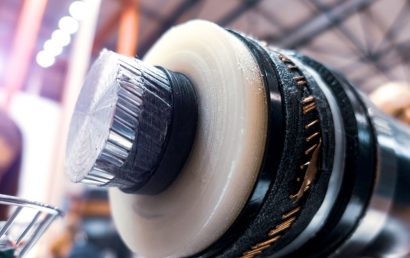An Introduction To Composite Materials
Throughout history, composite materials have been used and developed. Today, continuing advancements aim to make composite materials environmentally friendly, specifically manufactured to design, and cheaper. Let’s look at some of the uses, specialists, and properties involved in composite materials.
First things first – “composite”, as a term, can apply to numerous materials. Commonly, these include glass fiber-reinforced polymers (GFRP) or carbon fiber-reinforced polymers (CFRP).
Composites – What Are They?
When two or more materials are joined, a composite material is made. This usually applies to a reinforcement and a matrix. Together they produce a material that is unique and ideally superior to each individual component’s properties. Sort of a hybrid.
The role of the reinforcement, as it relates to the matrix material, is a support system or fiber that provides additional stiffness and strength. In a number of ways, it can be assembled, aligned, and cut with the intention of overall properties customization.
The role of the matrix keeps the material used for reinforcement in a desired orientation and is usually a form of resin. The reinforcement material is protected by the matrix from environmental and chemical attack. They bond together for the effective transfer of applied loads.
Other Parts of Composites
In composite manufacturing, additives can also be used to tailor performance, modify materials properties, and reduce costs. The tailoring of performance can include temperature resistance, dimensional stability, stiffness, surface smoothness, weathering, water resistance, etc.
Throughout the composites industry, core materials are also extensively used. Between the resin and the reinforcement, they are sandwiched to reduce warpage, increase flexural strength, and encourage stiffness.
The Benefits and Features of Composites
As suggested above, combining two materials offers the best of both worlds resulting in an improved product overall. This is particularly applicable when referring to steel composites.
In this case, resins and fibers work together to produce a superior product. Resins equally distribute the weight while fibers carry the load. Compared to wood, composite steels are very lightweight. That makes them easier to install and transport. It also means improved fuel efficiency when they are put to use in airplanes and cars.
Composites tend to resist damage better, as well. Harsh chemicals and weather have a harder time eating away at composites. Applications exposed to severe conditions such as temperature fluctuations, chemicals, and water can make good use of composites. They will also require less maintenance and offer a longer lifespan. For these reasons and more, aerospace and marine industries take advantage of composites whenever possible.
Even the leisure industry weighs in when it comes to using composites employing them in everything from kayaks to helmets, and everything in between. A&A Coatings deals with composite coatings on a regular basis. This is where two spray materials or more (which are dissimilar) are used together. They may be layered, or they may not. This, of course, is not the only coating process that we offer. Various industries utilize a variety of spray processes and coating materials. To help you decide which coating and process is best for your application, contact one of our experts today.




